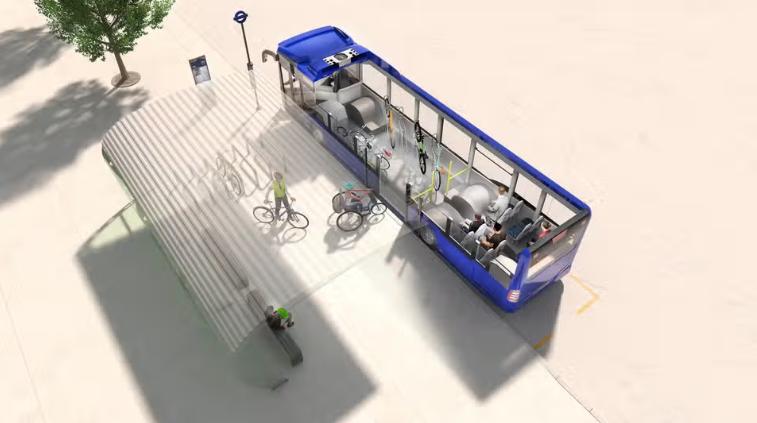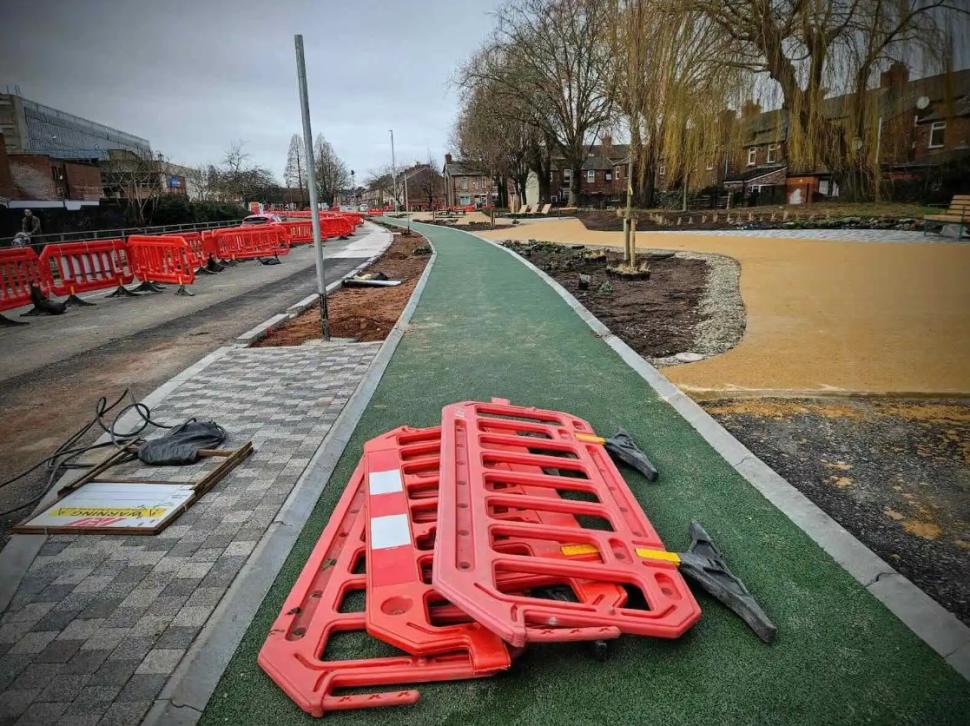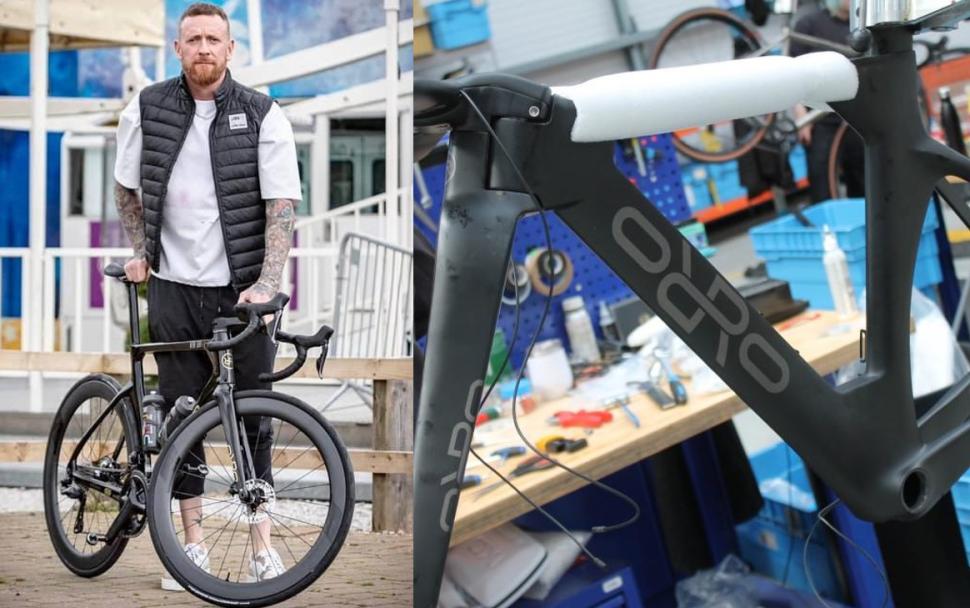- News
- Reviews
- Bikes
- Accessories
- Accessories - misc
- Computer mounts
- Bags
- Bar ends
- Bike bags & cases
- Bottle cages
- Bottles
- Cameras
- Car racks
- Child seats
- Computers
- Glasses
- GPS units
- Helmets
- Lights - front
- Lights - rear
- Lights - sets
- Locks
- Mirrors
- Mudguards
- Racks
- Pumps & CO2 inflators
- Puncture kits
- Reflectives
- Smart watches
- Stands and racks
- Trailers
- Clothing
- Components
- Bar tape & grips
- Bottom brackets
- Brake & gear cables
- Brake & STI levers
- Brake pads & spares
- Brakes
- Cassettes & freewheels
- Chains
- Chainsets & chainrings
- Derailleurs - front
- Derailleurs - rear
- Forks
- Gear levers & shifters
- Groupsets
- Handlebars & extensions
- Headsets
- Hubs
- Inner tubes
- Pedals
- Quick releases & skewers
- Saddles
- Seatposts
- Stems
- Wheels
- Tyres
- Health, fitness and nutrition
- Tools and workshop
- Miscellaneous
- Tubeless valves
- Buyers Guides
- Features
- Forum
- Recommends
- Podcast
news
Cyclist explains why riders "aren't very grateful for tiny painted cycle lane" on notorious route where council ripped out segregated bike lane; Pothole "roads emergency"; The incredible lengths London bike thieves will go to steal + more on the live blog
SUMMARY
 Kensington High Street painted cycle lane issues (Ryan Wilson/Twitter)
Kensington High Street painted cycle lane issues (Ryan Wilson/Twitter)03 October 2024, 10:39
Cyclist explains why riders "aren't very grateful for tiny painted cycle lane" on notorious route where council ripped out segregated bike lane
You might remember the cycle lane saga on Kensington High Street that is coming up to its four-year anniversary this winter. For those who don't, here's a 30-second recap...
The major route had a segregated cycle lane [pictured above] installed during the Covid pandemic. However, come December of 2020, Royal Borough of Kensington & Chelsea's (RBKC) Conservative-controlled council decided to remove the protected cycling infrastructure, returning the road to its old state after pressure from the area's Tory MP and actor Nigel Havers over congestion concerns. To nobody's surprise, the congestion the bike lane was apparently causing was not addressed by scrapping the scheme and long queues of backed-up stationary traffic can still be seen at almost all times of the day, the cyclists who use the route questioning for what benefit their journeys have been made more dangerous and less accessible.
Now almost four years on and the council, in its heart-warming benevolence, decided to give cyclists a thin strip of painted cycle lane instead, a decision that Jeremy Vine told the council it can "shove up their exhaust pipe" and prompted the London Cycling Campaign (LCC) to accuse the local authority of prioritising drivers.
Well, courtesy of Ryan Wilson, here is a cyclist's experience of using the new infrastructure, a cycle lane that RBKC councillor Cem Kemahli claimed "strikes the right balance between keeping our major through roads moving while allowing space for everyone"...
Q: Why are cyclists not very grateful for the tiny cycle lane @RBKC have painted on High Street Kensington?
A: Here are a few reasons from today’s pretty typical commute. pic.twitter.com/itUCBjNzDs
— Ryan Wilson (@rhwilson83) October 1, 2024
Vine said the footage was of an "average" day too, implying it can be worse still.
When the former segregated lane was ripped out, the decision was branded "shameful, callous and retrograde" by the LCC, with more than 200 joining a protest ride against its removal. Among those in attendance were parents, children and staff from nearby Fox Primary School who said the infrastructure had allowed them to travel to school by bike.
Then-Prime Minister Boris Johnson was said to be "ballistic" at the scheme's scrapping, while an analysis of Transport for London (TfL) traffic cameras on the route suggested congestion had actually worsened in the month after the local council removed emergency bike lanes.
Sadiq Khan too appealed for the cycle lane to be reinstated, something the council rejected before campaigners lost a High Court challenge against the decision to rip out the protected infrastructure.
In July of 2023, the council announced the painted cycle lane plans, prompting even more criticism and taking us up to the present day where cyclists' experience of the route is the video shared by Ryan.
Simon Munk, infrastructure campaigner at the LCC, said: "This is still a borough where the approach to cycling still seems to be doing the least possible and revving up residents to perceive cycling as an issue for their driving rather than an opportunity to cut car use and climate emissions."
However, when the paint plan was announced, Councillor Kemahli insisted: "It's heartening to see that people are open to the idea of some cycling infrastructure on our streets and this scheme strikes the right balance between keeping our major through roads moving while allowing space for everyone.
"Making our roads safer as well as greener is a priority for us."
03 October 2024, 16:48
Some more evening browsing for your way home (unless you're riding back of course)
When you're done with the blog be sure to check out the latest road.cc Recommends for all our kit and tech recommendations this month...
Jamie's also been over to Italy to find out what goes on behind the scenes at Pinarello and got to take the new Dogma F for a spin... it's a tough life, isn't it...
Adwi will be here in the morning for your Friday live blog fix, have a good evening...
03 October 2024, 15:20
Transport for London announces details of new cyclists only shuttle service under River Thames
A quick bit of news next...
The Evening Standard has reported that Transport for London is to have three single-decker buses converted into "bike buses" to take cyclists through the Silvertown tunnel, with Stagecoach East being awarded a three-year contract for the service which will be free for at least the first year of use.
Silvertown tunnel is expected to open in the first three months of 2025, the bike bus the only way for cyclists to travel through (from North Greenwich to Canning Town), with "at least" five services an hour in each direction during operating hours of 6.30am to 9.30pm seven days a week.
03 October 2024, 14:45
"Not everyone can leisurely take a bike": Active travel scheme branded "most expensive cat litter tray in history" by residents threatening to move away from "nightmare" area – but cyclists say town centre will become "safer and more pleasant place"
03 October 2024, 14:32
Lachlan Morton logs another monster day as finish of Australia-conquering endurance ride nears
Another huge day in the saddle although, given some of the 400km+ days Lachlan's been bashing out, this may be a rest day...
03 October 2024, 13:29
Tadej Pogačar to debut rainbow jersey this weekend at Giro Dell’Emilia
Tadej Pogačar begins his year in the rainbow jersey this weekend, making his first appearance in the famous bands at the Italian one-day race Giro Dell'Emilia on Saturday.
"This period of the year is always one of my favourites for racing and it will be even more special now with the World Champions jersey on my back," he said. "What happened in Zurich was a dream for me. Whatever happens from here on is a plus but given the amazing season we've had as a team we want to push right until the last race and end on a high note. These end of year classics in Italy are beautiful, exciting races and we're ready to give them a good shot."
03 October 2024, 11:17
Collapse of major UK cycling distributor "huge shock" after investor pulled out of Orro Bikes deal "at the very last minute" – but hope "someone in the industry" will rescue business
03 October 2024, 09:26
YouGov poll finds eight in ten Brits want government to fix potholes rather than build new roads
On the subject of potholes, Carlton Reid's latest piece for Forbes highlights the findings of a recent YouGov poll, with eight in ten respondents suggesting they would rather the government fixed potholes than build new roads.
The poll comes with the context of Labour's Transport Secretary Louise Haigh ordering an urgent review into the Department for Transport's spending, a decision on whether the new government will alter the UK's road-building programme in a bid to cut costs expected imminently.
In the YouGov survey, 63 per cent expressed dissatisfaction with UK road conditions and 81 per cent said they would rather money was diverted to councils to fix potholes, rather than be used for new road projects.
03 October 2024, 08:24
Shimano confirms Q'Auto technology will be seen on bikes in 2025
Shimano confirmed to us overnight that the reports out of Japan are indeed correct and we can expect to see this tech hit the market next year. Read all about it here...
03 October 2024, 08:16
Even if you locked your bike a London thief may still steal... your handlebars?!
BBC London Transport & Environment Correspondent Tom Edwards shared this on Twitter, saying a colleague had returned to locked bike on South Bank to find their bars, shifters and stem had been stolen... Oh, and it's the second time it's happened...
03 October 2024, 07:53
Under-fire council warned of "roads emergency" from "dangerous" potholes — as cyclist claims £6,000 after breaking shoulder in crash
We're starting the day's news in Staffordshire where members of the Stafford Borough Council have backed the formal declaration of a "roads emergency" in the county due to the "worryingly poor state of repair" of potholes. StokeonTrentLive reports that the declaration comes as one councillor presented the motion by pointing out cycling with his two daughters is "dangerous at the best of times" but has been made "very nerve-racking" by the state of the county's roads.
Green Party councillor Scott Spencer continued: "On his way to the station last year, my friend who lives in Stafford and commutes to Birmingham and cycles to the station hit a pothole and broke his shoulder. He then claimed against the county council and got £6,000.
"I ride a motorcycle and I also cycle with my two young girls. Both of these activities are dangerous at the best of times, but the conditions of our roads make it very nerve-racking as a parent. I'm even told by some residents that they fear driving, cycling or even walking and in some cases no longer opt to drive due to potential damage or injury to themselves or their vehicles."
However, in response, county council member Jeremy Pert blamed the weather for the issues and claimed the council had put "really impressive" funds and effort into fixing road defects.
He said: "We've just come through the wettest winter in the last 130 years and the problem with the weather wasn't that it was cold, but the dampness and rain fundamentally undermined the quality of the road network that we have not just within Stafford Borough but the county.
"To me it's not what you deal with, but it's how you respond to it. Back in May the county council put an extra £8m into fixing the county's roads; they currently put £42m into operational repairs and £83m into capital schemes. We've seen £5.6m spent across six schemes in Stafford Borough, including Radford Bank, Weeping Cross, Gaol Square and Newcastle Road in Cotes Heath. But the bit I think is really impressive is the 191 locations where over £5m has been spent doing patching and repair work."
He also suggested that "some of the motion is backwards" and "relates to something that has been a problem the county (council), which is the highways authority, has dealt with and done". Sounds like there'll be no problems with fixing potholes in Staffordshire this winter then...
Images for illustration purposes only and aren't Staffordshire potholes... these belong to some other lovely part of the UK road network...
Dan is the road.cc news editor and joined in 2020 having previously written about nearly every other sport under the sun for the Express, and the weird and wonderful world of non-league football for The Non-League Paper. Dan has been at road.cc for four years and mainly writes news and tech articles as well as the occasional feature. He has hopefully kept you entertained on the live blog too.
Never fast enough to take things on the bike too seriously, when he's not working you'll find him exploring the south of England by two wheels at a leisurely weekend pace, or enjoying his favourite Scottish roads when visiting family. Sometimes he'll even load up the bags and ride up the whole way, he's a bit strange like that.
Latest Comments
- andystow 0 sec ago
Okay, but one attacked a single cyclist, the other delayed multiple drivers!
- newbankgyratory 2 sec ago
Useful video. Gives a chance to see other's points of view. Albeit not a lot of anticipation or consideration being shown (from the cammers). Very...
- S.E. 16 min 30 sec ago
It's probably in Romania by now, or Poland, but a picture would certainly help, size too?
- S.E. 25 min 40 sec ago
Sounds like spam... which bike was used for the kit, please at least post pictures with the end result.
- chrisonabike 31 min 25 sec ago
He needs a good lawyer......
- Spangly Shiny 1 hour 18 min ago
Sorry, I just could not finish the article. As soon as I saw figures quoted in excess of 100% I had to look away. There is nothing greater than 100...
- wtjs 2 hours 2 min ago
I live in Gloucestershire where being inconvenienced is dealt with more harshly than being close passed, no matter how close or how fast...
- Hirsute 3 hours 28 min ago
I have read people commenting before about not having a camera on your helmet as it will give you injuries....
- chrisonabike 5 hours 1 min ago
Perhaps you're running them at lower pressures / with extra weight? I've found they feel sketchy at least when cornering and I've had a few offs...
- chrisonabike 5 hours 7 min ago
True ... but left to itself that notion tends to go the same way as instructing pedestrians, cyclists and SUV drivers to "share the road"!...














Add new comment
52 comments
Handlebar & brake levers from wife's bike and seatpost & saddle from mine taken when locked up outside theatre in West London in early 1986. With very little money, we couldn't afford to replace so had to take bus for our 10 mile each way commute for a few months.
Good outcome: discovered Shimano 105 dual pivot brakes. Total game changer from the Weinmann 500 and 730 we'd been using (they were high level brakes for the time), still have Weinmann brake tool
IF councils would pay more attention to cyclists complaints about pot holes and poor road surface quality we would end up with far better roads for all road users. Can you imagine how much whingeing we'd get from motorists if they could feel the roads like we do.
Every road I ride on I notice imperfections that are damped out by motor vehicle tyres and suspension systems.
All the 'safety' systems built in to motor vehicles isolate the driver and occupants from more than impacts.
IME the council is pretty rapid at fixing a pothole when I report it (usually with a picture of my bike wheel in said hole to demonstrate the danger). The problem is how they fix it, and how long it lasts. I actually think I notice the road surface more when driving, as you don't always have the ability to go around a hole like you can on a bike.
Tbf, motorists also complain about potholes. £billions lost to economy due to tyre and shock absorbers wear from state of our roads. The larger wheels on soft roader SUVs do reduce the impact to occupants compared to, eg Nissan Micra a friend has, and the immediate cost to individual owner isn't as obvious as snakebite puncture for bike, but cost to nation is vast
I recently advised a friend who wants to move on from the urban bike he bought and used a lot for a few years. He asked about second hand road bike. After a few suggestions, I ended by advising to jump to a new fat tyre gravel or all-road bike to cater for bad roads. I mentioned narrow wheels getting into ruts, especially at junctions while signalling with one arm out. Also, if fat tyres, go shorter cranks. Then suggested a bike fit. He can afford it very easily but not a bike snob or show-off
Not so controversial opinion but in most cases I would rather there wasn't a "cycle lane" if it isn't protected. I get worse passed on them because apparently once you are on the other side of that line you are protected and don't need 1.5m. They aren't cleaned by cars driving over them constantly so they accumulate debris and they are constantly interrupted by all manner of things.
If I recall, there was a study recently that showed a 30% greater risk of KSIs on a A-road with a painted lane than a comparable lane without a painted lane.
In other words, painted lanes are more dangerous than no lane at all.
Iirc, mandatory painted white lines (ie solid white lines) make no difference to cyclists' safety, but advisory (dashed) lines make it more dangerous.
Been saying that for years. Encouraging to know there's evidence, now I'll look it up. It helps win over drivers who are surprised to hear me deplore many (most?) bike lanes as spending-performance target box tickers that are more dangerous, for several reasons, than no bike lane and better layout
Not what drivers want to hear though because what they're saying is "needs protection" not "no bike infra". So if we are throwing away - sorry, spending - so much money on the roads that we "can't afford" proper separate cycle infra where needed, take a bit more space and plonk down eg. concrete Jersey barrier blocks to protect the cycle lane.
Of course that's still "too cheap" as it doesn't help much at junctions and gets in the way of pedestrians somewhat. But does at least keep vehicles out of the lane.
("Cycle lanes" really aren't the way, properly designed cycle *networks* are - which will have some separate cycle paths and some "very quiet streets".)
Ultimate solution is drivers and those providing for driving realising that the best solution to help people driving is ... having far fewer journeys driven.
https://m.youtube.com/watch?v=d8RRE2rDw4k
Much as I share Ryan's despair at RBKC's "Yes we stole a pound but here's a penny" approach to cycling infrastructure, pedantry obliges me to point out that not only is the road in question called Kensington High Street - only the tube station, for unknown (to me) reasons, is called High Street Kensington – but also the road in question doesn't actually begin until about 100 m after his video ends, what his video actually shows is Kensington Road.
It reminds me of the fact that although there is a Bond Street Tube Station and a square on the Monopoly board called Bond Street, there is no Bond Street in central London. (Rather, there are two roads, New Bond Street and Old Bond Street.)
"after pressure from the area's Tory MP and actor and unrepetant convicted drink-driver Nigel Havers over congestion concerns"
ftfy
Annual Local Authority Road Maintenance (ALARM) survey
Executive Summary - roads are fucked and it will take £16.3 billion and 10 years to fix them.
Well obviously that's because of the War on the Motorist, wokeness and ... er ... cycling.
Could this be another case where (although they'll privately understand) politicians just can't say the obvious? e.g. that as well as looking at supply (of sufficiently maintained road surface) we can - and indeed should - also look at demand (for journeys driven, including road freight)?
EDIT - also demand for more roads (because more buildings / houses - apparently an increase in this coming soon because "need"). And demands by more utilities companies for digging up roads (and shoddy repairs)? There are economic drivers for this (and then political approval) because if you do it cheap you can get volume sales, and then repeat business as things you build / repair don't last so have to be redone...
No doubt we have been under-maintaining, but the demand - and wear and tear - has been increasing and our politicians have nodded along to that. Or indeed encouraged it - "on the side of the motorist" and "growth" (which currently always means more driving).
The roads may end up as bad as the rails got in 1945 - what we need is a major change of direction, rather than throwing good money after bad.
Apart from UK long history of making and maintaining roads on cheap and our climate being particularly hard on roads, I remember sitting in on an analysis of road repairs and safety: apparently, funding approvals for such works are made such that the actual on site work usually has to be done at worst time of year. With our annual lose it or lose it funding cycle, it makes for unhappy local authority road management teams as they have to do a worse job than they know that they could do for the same money. They'd far prefer to do a much better job for a bit more well-timed money
Road management and maintenance is a giant rabbit hole of a topic and I'm not a civil engineer... but it does seem to me the UK has a "laissez-faire" approach to private works and (private) utilities digging the streets up, plus as you say "potlach" funding (it appears then grab it before it's gone). At least the planning for things is such a muddle we end up leaving some roads to get trashed for decades but others get dug up eg. for utilities as soon as they've been refurbished, then have to be redone again (Have seen this happen in England and here in Edinburgh).
The other thing is this isn't "inevitable" - in NL at least they seem to have a different system of batching together road resurfacing and street improvements together with utilities works. I don't know exactly how it works in NL - but I do know the local government organisation, laws and responsibilities are different. Which might mean "can't get there from here".
Rachel Reeves' black potHole in the economy.
I've often seen people riding around without seatpost and saddle, but never without handlebars
Unicyclists can be an elusive bunch, but I'll bet a squirrel will ride round in a bit
Never without handlebars on a safety style bicycle with two wheels
Or if you actually meant a safety style bicycle with two wheels only,
https://www.youtube.com/watch?v=tU1pRjqsRgQ
I'll get my coat…
Finally something that isn't a Brompton that has a fighting chance of being able to meet Eurostar's ridiculous 85x85 size requirement for bikes on their trains (in a bag)! Where can I get one?
PS: The "bike" in pic seems to have 3 wheels??
Meet Guiliano Calore, who descended the Stelvio on a bike with no brakes or handlebars...
"Foot braking" - still mind-blowing though (not least ... why??)
Watch here (this one with handlebars, not that they're used...):
https://www.youtube.com/watch?v=ZV4MJok1_2o
Wore through toes of bike shoes in 1980. Tight turn in a peak District into a short steep down slope that had tight turn at bottom. Teeming rain, side pull brakes on chrome steel rims, riding fast back to rest of the group to take some of their luggage after dropping mine at Youth Hostel.
Pages